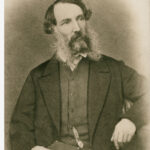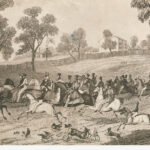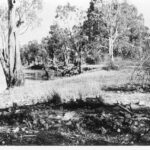Edward John Eyre (1815–1901) was English-born and educated for a military career but decided to travel to Australia instead. Arriving in Sydney in March 1833, Eyre soon displayed his flair for self-reliant leadership and adventure. He took up grazing land and was among the first to overland mobs of sheep and cattle from New South Wales to the infant South Australia.
Eyre took charge of an 1840 attempt to find a land route between the settlements of South Australia and Swan River on Australia’s west coast. Travelling north from the head of Spencer’s Gulf, near Adelaide, Eyre was blocked by South Australia’s great lakes, his feelings reflected in the names he gave to the landmarks Mount Deception and Mount Hopeless. Suspecting the existence of an inland sea (a myth dispelled only when John McDouall Stuart made the journey past Lake Eyre into Australia’s heart in 1860–61), Eyre returned to Spencer’s Gulf and decided to forge westward to the coast of the Great Australian Bight. His first attempts failed. Gruelling pushes through waterless and scorching wastes exhausted men and horses and gained only a few more miles with each attempt.
Governor George Grey refused to allow a South Australian supply ship to sail beyond the province’s boundaries. Eyre knew that an exploration party journeying from its provisioning camp at the eastern end of the Bight to the settlement of Albany on King George Sound, a journey of at least 1500 kilometres aided only by memories of Captain Matthew Flinders’s 1802 coastal charts, must either defy the governor or travel light. Choosing the latter, Eyre rode out of Fowler’s Bay on 25 February 1841 accompanied by John Baxter, three Aboriginal men known as Wylie, Joey and Yarry, several horses and six sheep. Hardships of heat, exhaustion, hunger and thirst were compounded when Joey and Yarry murdered Baxter and stole stores and guns. Wylie and Eyre continued alone. After a fortnight spent recuperating aboard a French whaler, the two persevered through torrential rain, swamps and freezing nights, arriving in Albany on 7 July 1811. Eyre was awarded the Royal Geographical Society’s medal in 1847.
Leaving Wylie with his kin, Eyre immediately returned to Adelaide by ship. Settling near the River Murray, Eyre was appointed magistrate and protector of Aborigines at Moorundie, where for three years he sensitively quelled the frontier violence that persisted in the region. Leaving Australia, Eyre served as lieutenant governor of New Zealand, 1846–53, and governor of St Vincent, 1854–60. Appointed governor of Jamaica in 1864, he was recalled in 1866 after his suppression of an Afro-Jamaican uprising with over 400 executions. A grand jury and a royal commission found Eyre had no case to answer but condemned his ‘unnecessary rigour’. The case rent British society and is still debated.







Comments